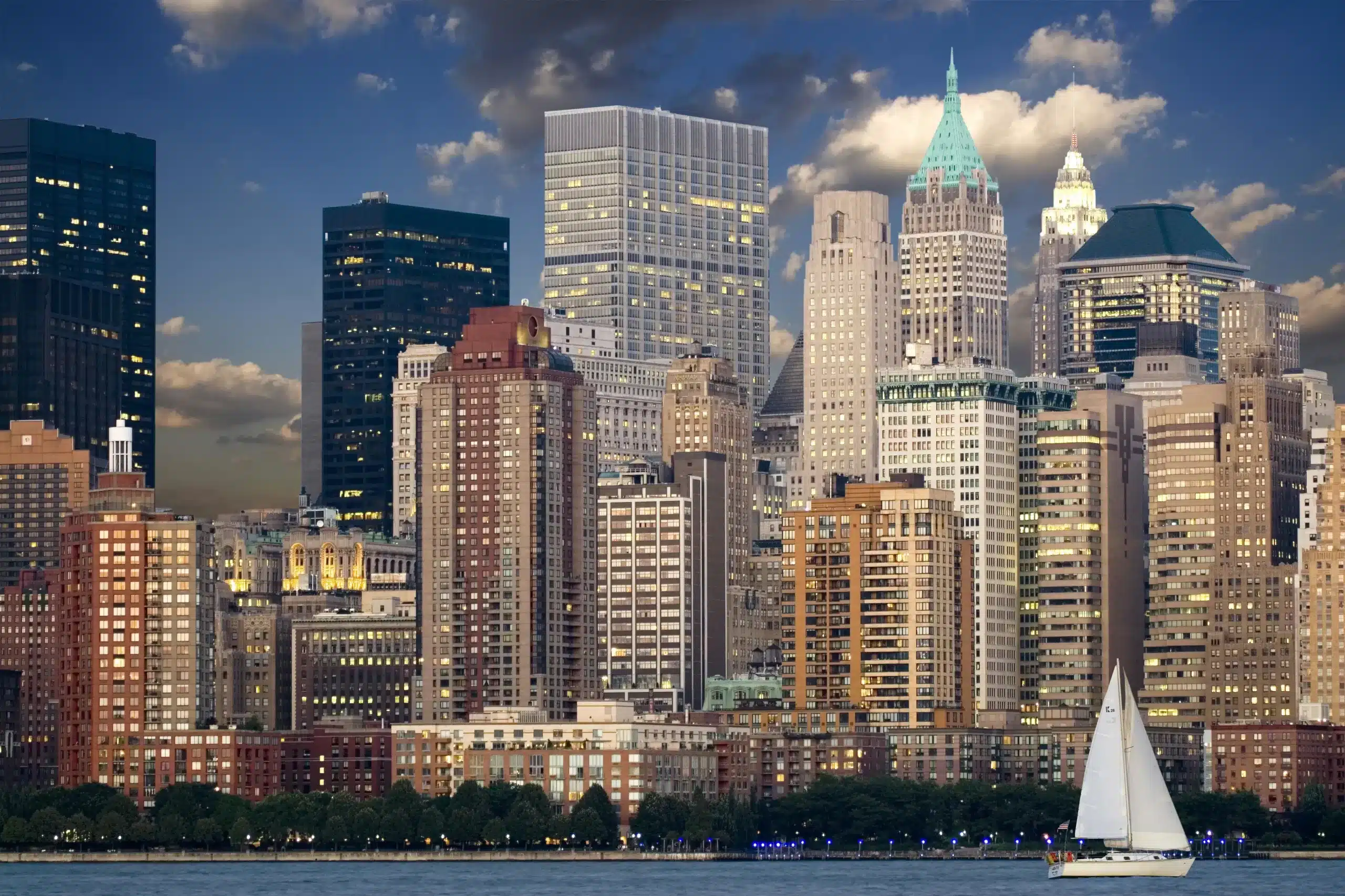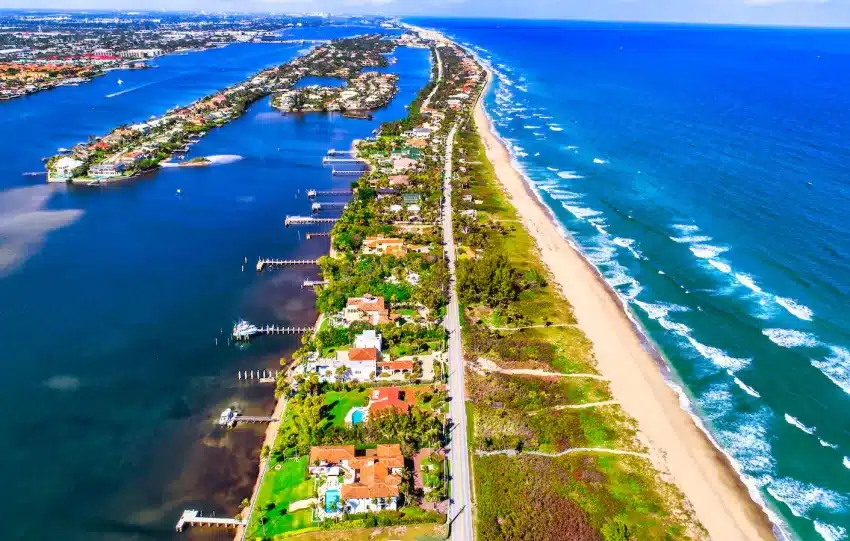Key Takeaways
- In the past decade, megamansions in Los Angeles have become a trend, with people seeking homes of 20,000 square feet or more, notably since 2015.
- The buyer demographic in luxury real estate is getting younger, fueled by tech, venture capital, social-media stardom, and inheritance wealth.
- High-end homes now require amenities like home theaters, gyms, and mandatory home offices, going beyond traditional expectations.
- In New York, luxury markets are shifting focus, with neighborhoods like Tribeca and SoHo becoming premiere locations rivaling traditional uptown areas.
- Toronto sees a shift to domestic buyers and multigenerational families investing in luxury properties, with women-led purchases rising.
- The Palm Beach market has transformed from a seasonal to a year-round destination, with home prices significantly increasing.
- Miami’s luxury market has evolved from a retirement hub to attracting major corporations, with a focus on newer construction and integrated outdoor living.
- San Francisco’s market experienced a downturn during the pandemic, highlighting a boomerang effect and potential opportunities for future rebounds.
In the ever-evolving world of luxury real estate, the past decade has been nothing short of transformative. Shaped by megamansions, shifting demographics, and changing market dynamics, the landscape in major cities like Los Angeles, New York, Toronto, Palm Beach, Miami, and San Francisco has undergone significant changes. In this detailed analysis, we explore these key trends, offering insights and advice for buyers, investors, and industry professionals.
MegaMansions in Los Angeles: A New Era of Grandeur
Since 2015, Los Angeles has witnessed the advent of megamansions, with homeowners seeking properties that span 20,000 square feet or more. This trend signifies more than just a taste for opulence; it’s a reflection of a cultural shift where space is the ultimate luxury. Influenced by Hollywood glamor and a desire for privacy, these estates are designed to impress and provide a sanctuary from the bustling city life.
Key Features of Megamansions:
- Expansive Gardens: Designed for both aesthetics and recreation.
- Private Theaters: Bringing the cinematic experience home.
- State-of-the-Art Gyms: Equipped with the latest fitness technology.
- Home Offices: A necessity in the modern work-from-home era.
The Rise of the Young Affluent Buyer
The buyer demographic in luxury real estate is notably getting younger, driven by sectors such as tech, venture capital, and the growing influence of social media. This new breed of buyers brings a different set of expectations and demands.
- Tech-Savvy Homes: Smart home technology is no longer a luxury but an expectation.
- Sustainability: Younger buyers are eco-conscious, seeking homes with sustainable features.
- Design: Preferences lean toward minimalistic yet luxurious interiors.
New York’s Shifting Luxury Landscape
In New York, the luxury real estate market has experienced a geographical shift. Areas like Tribeca, SoHo, and the West Village have emerged as premier locations, challenging traditional uptown strongholds. This shift is driven by a desire for unique properties with historic charm and modern amenities.
Notable Changes:
- Diverse Buyers: From tech executives to international investors.
- Modern Developments: Influence of Billionaires’ Row setting new standards.
- Neighborhood Appeal: Rising demand for penthouses and full-floor residences.
Toronto: A Localized Luxury Boom
Toronto’s luxury real estate market has increasingly become dominated by domestic buyers, including multigenerational families and women-led purchases. This shift is a reflection of accumulated wealth and equity growth within Canada.
Trends in Toronto:
- Open-Concept Designs: Evolving to include defined zones for privacy and functionality.
- Smart Systems: Integration of technology in everyday living.
- Wellness Features: Including home spas and meditation rooms.
Palm Beach: From Seasonal to Year-Round Luxury
Once known for its seasonal appeal, Palm Beach has transformed into a year-round luxury destination. This transformation, accelerated by the pandemic, has led to a surge in property appreciation and market demand.
Market Impact:
- Price Increase: Significant growth setting new price floors.
- Year-Round Appeal: Attracting a steady influx of new residents.
Miami: A Hub for New Construction and Modern Living
Miami’s appeal as a luxury market has expanded beyond its retirement community image to become a financial and corporate hub. The focus has shifted to newer constructions with integrated indoor-outdoor living spaces, appealing to a diverse set of buyers.
Current Market Characteristics:
- Corporate Influx: Attracting major companies and executives.
- Home Design: Emphasis on modern architecture and outdoor living areas.
San Francisco: A Chance for Rebound
The luxury market in San Francisco faced a downturn during the pandemic, but it presents unique opportunities for buyers. A fluctuation in housing costs and a decline in transaction volume may position the market for a rebound, offering investors a chance to enter during a potential low.
Investment Opportunities:
- Condos: Potentially undervalued, with opportunities for growth.
- Tech Influence: Continual draw for global talent in Silicon Valley.
From megamansions to sustainable, tech-infused homes, the luxury real estate market in these key cities has adapted to new demands and expectations. Understanding these trends is crucial for anyone looking to navigate this prestigious segment of the real estate industry.
Stay Ahead of the Curve in Luxury Real Estate
The definition of luxury is evolving—are you keeping up? At POCKETLISTING, we curate insights, trends, and exclusive opportunities shaping the next era of high-end real estate. Explore the future of luxury living and connect with the world’s most discerning buyers, sellers, and developers.





